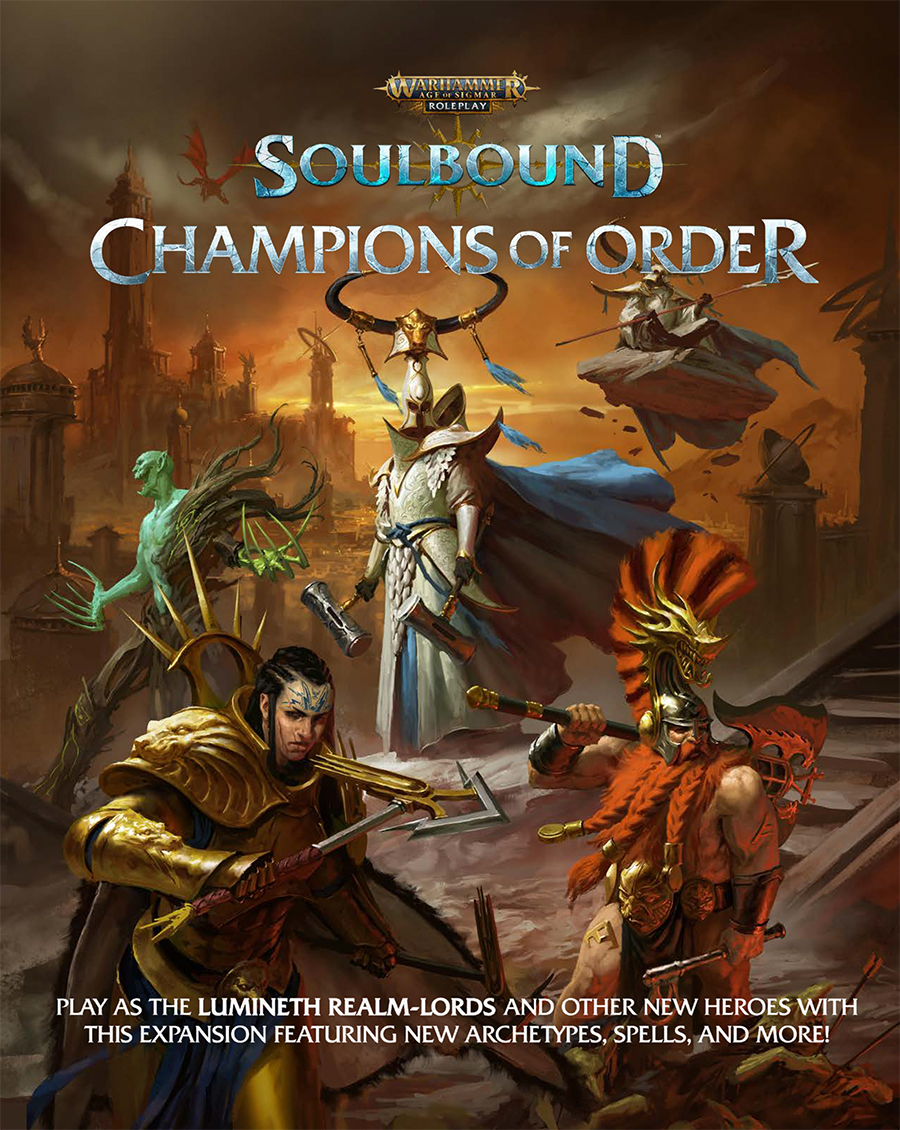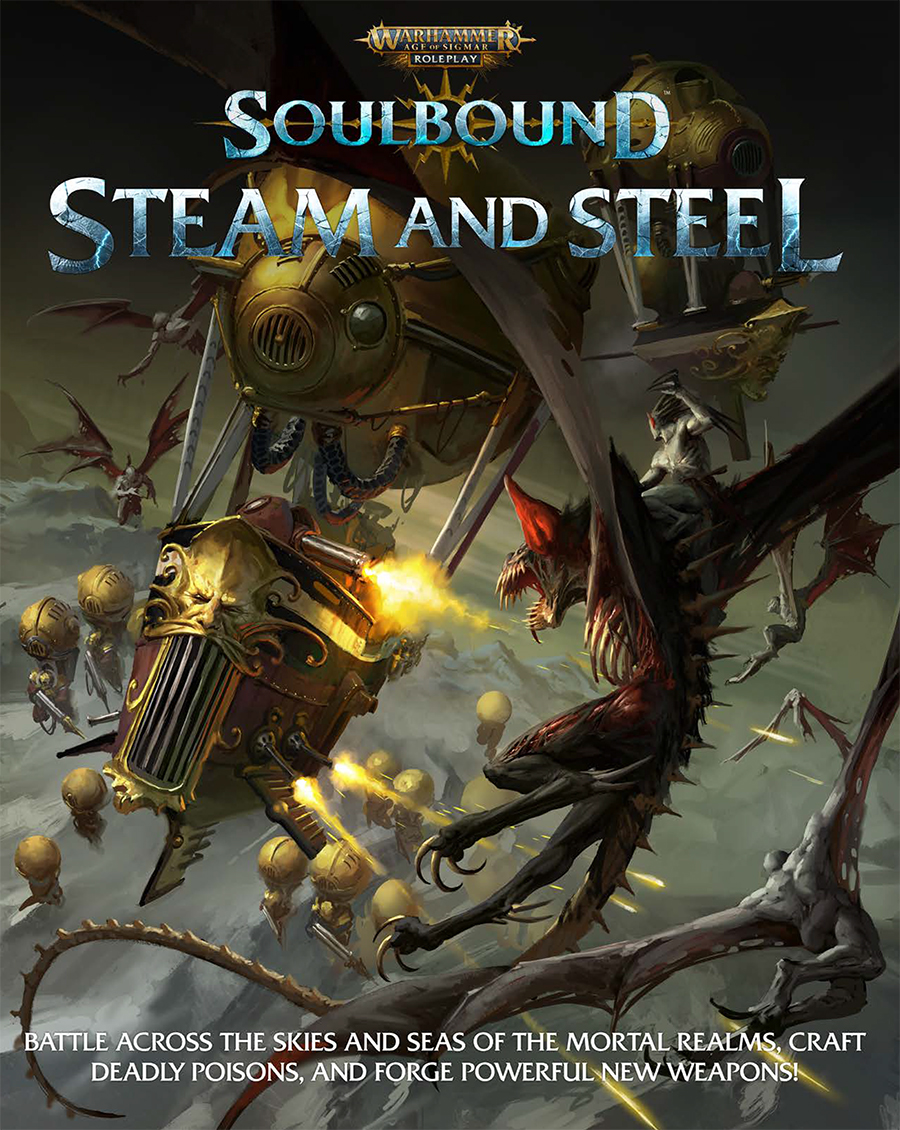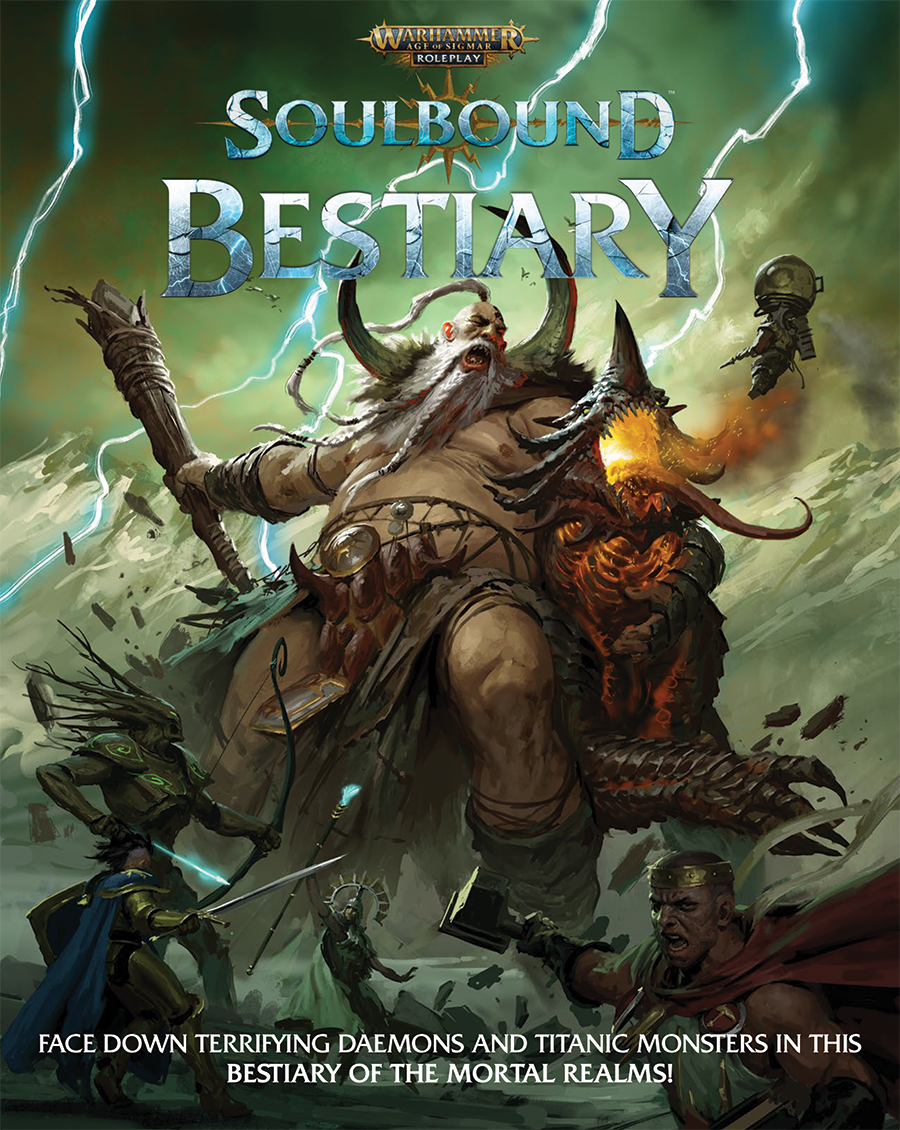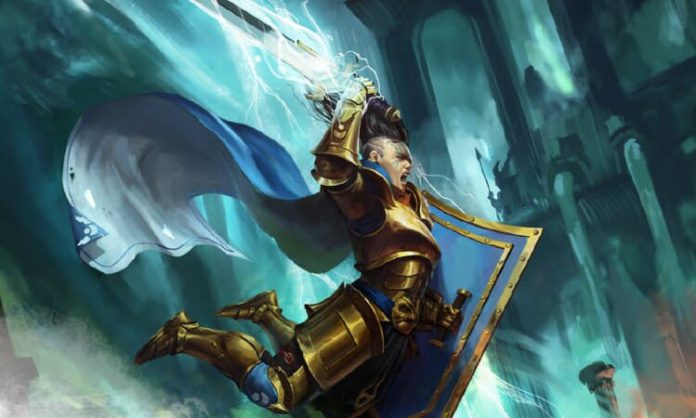If you missed last week’s coverage of Cubicle7’s Age of Sigmar RPG Soulbound, head back and check it out now. It’s an epic RPG of titanic battles and conflict and it doesn’t stop with just the Core Rulebook and a few adventures. Cubicle7 has quickly published an impressive array of supplements for GMs and Players alike.
Some of these simply plug right in, adding more monsters or items but most also include additional character growth or creation options. It allows you to lean in an aspect of your character you want to explore, like crafting or alchemy, while fleshing out your campaign options. Others, like the Champions of Death, can change the entire structure of the way you play!
Champions of…
Order
Champions of Order is a straight forward book, and a natural first purchase for players. It greatly expands player options for each Faction, adds a new faction in the Lumineth Realm-Lords, and adds a pile of new talents and spells as well. It also notably introduces the concept of subfactions. Pulled straight from the pages of your favorite Battletomes these add a deeper complexity to your characters and some mechanical benefits.

For the most part, Champions of Order is very useful, while not necessarily exciting mechanically (amazing for background and lore). The coolest bit for me to read was the section on the Stormcast Reforging and how you can add it to you play. This is includes how to handle the death and reforging of a Stormcast player as well.
While not overly exciting, I would highly recommend someone in your group picking this one up (give your GM a break maybe?). It provides tons of fantastic background lore that fleshes out each faction and archetype. The breadth of talents, spells, and other growth options provide what you need to further diversify and make your character unique.
The options in the Core Rulebook are fairly limited, likely due to space constraints. It’s already a beefy book. Champions of Order is an easy first pickup for any group.
Death
As it turns out, Sigmar isn’t the one with champions. Champions of Death along with the upcoming Champions of Destruction (and I assume a later Chaos version) allow those of us whose favorite denizens of the Mortal Realms are greener, smaller, and have a lust for mushrooms to enjoy Soulbound. Or I guess if you want to play a Court Ghoul you can do that too.

As you might expect Champions of Death includes everything you need to create Death characters. Races and Sub-Factions, Archetypes (like classes), Talents, Spells, etc. The bulk of the book is taken up with these player-centric rules. You’ll still need a copy of the Core Rules to play, as rules for things like combat, rolling, and player growth are not reproduced.
It also, however, includes quite a bit of information for players and GMs regarding what it means to run a Death Aligned campaign. I did not expect this information, I generally expected this to mostly be a reskin with new character classes, but after reading these sections of the book it’s clear that the design team wanted more.
For players, this begins with notes on the changes wrought to the undead by the magic of the binding. Nighthaunt given free will can suddenly feel echoes of emotions and sense felt by their companions; a fleeting taste of a life that was and could be again. Flesh Eater Court ghouls see the curse that veils them lifted and come face to face with what they are. These also lead to new motivations; that same Ghoul may swear themselves to a Mortarch for the purposes of lifting the curse from their clan.
For the GM this also includes framing tools and campaign structure. Notably it also recommends additional prep during a “Session Zero” due to the potentially dark nature a Death-Campaign can take. The structure can change as well. Many of the Endeavors (long-term activities intended to represent downtime) involve massing power or followers before executing rituals and schemes that will take down the forces of Order.
Where an Order-Aligned Binding will typically be sent out on quests to kill large monsters or clear an undercity, Death is more subtle. A Soulblight Vampire may spend months quietly turning citizens and politicians of a city. A Bonereaper will assess the strengths of a City before demanding a bone tithe. This requires a different approach to running a game as its possible the group spends extended time in a lair plotting and gathering power.
Accordingly, the book provides guidance on how to make this work. It also provides information on how to structure as session. Instead of running your endeavors as downtime, perhaps the week long blood ritual is the session with forces of order assaulting your keep in an attempt to interrupt.
Finally, the book includes enemies enemies from the forces of Order; all are Archetypes you might have chosen to play as otherwise!
Give Me More
Steam and Steel
Releasing imminently, Steam and Steel introduces robust crafting and alchemy systems to your Soulbound adventures (useable by Champions from any Grand Alliance) and additional Archetype features for Fyreslayers and Kharadron Overlords.

Both systems work similarly. You start by first determining what you want to create (weapons, grenades, etc) and start selecting traits. Traits can be things like extra points of damage, keywords, and effects, and all come with a dual layered cost. The first cost comes in the way of resources; creating cool things requires spending currency. The other cost comes via difficulty.
Crafting is an Endeavor that players can embark on; these are down-time activities that have been fleshed out in every expansion book so far. The more traits you layer on the higher the complexity of your extended test.
This is a mostly mechanical exercise, however one of the things the Cubicle7 team has done throughout all these books is enforce the narrative even when things get crunchy. The crafting sections detail various ways to acquire resources (spending money or going on quests) and even include Talents to make your characters better at foraging. While you can resolve all this with a bit of math and some rolls the book lays out how you can turn a player’s request to make a cool weapon into a legendary quest worthy of a storied blade.
Bestiary
If Champions of Order is a natural first buy for players, then the Bestiary is what the GM is going to want to reach for. I don’t want to imply that the Core Rule book is sparse—it isn’t—but there is naturally only so much room available for creatures. The Bestiary blows the doors open. It’s stuffed cover to cover with creatures great and small from all 4 Grand Alliances.
Some of the creatures build in what has been seen. I particularly like the more powerful champion creatures whose abilities and attacks get stronger as the Doom gets higher. Doom is a great narrative element and its great to see it woven throughout the mechanisms.

Most important, however, are the pages dedicated to encounter structure. Creatures in Soulbound are not given a “Challenge Rating” or any other indication of a level. This can make it hard on GMs to design encounters, particularly given how ridiculous a player’s turn can get. Combining Soulfire and Mettle can create incredible combat rounds and it’s easy to see your Champion laid low quickly.
While the Beastiary does not provide anything like a CR (they truly aren’t needed in this system), it does provide welcome tips. I highly recommend this supplement as a quick pickup, especially if you don’t play to run published adventures.
Richer Adventures
As noted above, the Core Rulebook has to cover a lot of ground. This has the unfortunate (if understandable) side-effect of providing minimal options for all the major categories of adventure stuff. Monsters, equipment, etc are provided in enough to get you going but eventually you’ll bunch up against the limits.
This review is not fully encompassing. Artefacts of Power fills your adventures with not just items, but massive Endless Spells. It even gives rules for mining Realmstone and risking your life as you cast spells. PDF supplemnets like Doomed Lands make the Doom system richer and give you places to explore in other realms. There’s seriously a lot, and I haven’t even touched on the published adventures (I won’t review these until I have played them).
This is why I’ve noted multiple types that I’m pleased Cubicle7 is supporting Soulbound as a full system. I love GMing, but I simply don’t have the time to create worlds whole cloth anymore. That’s a young man’s game I’m afraid. I am, however, happy to fill my shelves with the books necessary to tell grand stories. It’s only been a year but the future looks bright for Soulbound.
Cubicle7 provided promotional copies of these supplements for review purposes.


